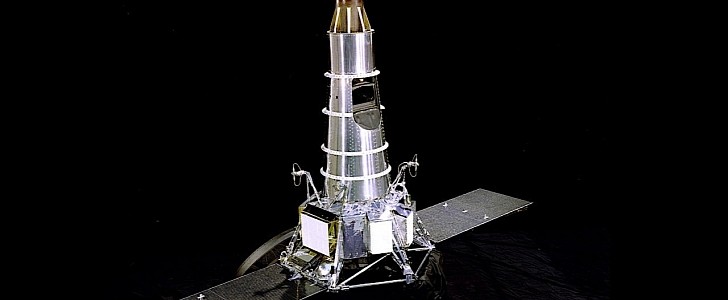In November last year, NASA launched what may very well be humanity’s first attempt at intentionally altering the course of an extraterrestrial body. Called Double Asteroid Redirection Test (DART), the spacecraft will smack into a binary asteroid called Didymos at speeds of 15,000 mph (24,140 kph). But human-made objects have crashed into alien worlds, perhaps without such a definite goal, long before DART.
Back in 1965, four years before the first humans set foot on the Moon, NASA launched the Ranger 9. It was merely a probe, sent on purpose to crash onto the surface of the satellite and record every moment before its demise.
Directed at a lunar crater called Alphonsus, believed to have been volcanically active in relatively recent times, the Ranger 9, just like its predecessors, was packed with cameras. Six TV vidicons, two wide-angle and four narrow-angle, were on board, hoping to capture images to last for an eternity. And boy, did they!
Unlike previous Rangers, all the cameras on this one were pointed directly in the direction of travel “yielding stunning photographs of the lunar surface,” and improving “scientists' understanding of the moon's mass.”
Ranger 9’s greatest contribution to our understanding of the place is that by using its images, scientists would learn “the moon's center of mass is displaced from its geometric center.”
For the greater public though, the short videos it captured just before smashing into the Moon will remain the point of reference. Our generation might not know them, but that's what the Internet is for.
On March 24, exactly 57 years after the moment of impact, the National Air and Space Museum released what it calls “a perspective view of the Ranger 9 spacecraft impacting the Moon.” For us, it represents the last thing a spacecraft saw before being obliterated, but also a very disturbing close-up of the Moon.
To see what we mean, enjoy the very short video below.
Directed at a lunar crater called Alphonsus, believed to have been volcanically active in relatively recent times, the Ranger 9, just like its predecessors, was packed with cameras. Six TV vidicons, two wide-angle and four narrow-angle, were on board, hoping to capture images to last for an eternity. And boy, did they!
Unlike previous Rangers, all the cameras on this one were pointed directly in the direction of travel “yielding stunning photographs of the lunar surface,” and improving “scientists' understanding of the moon's mass.”
Ranger 9’s greatest contribution to our understanding of the place is that by using its images, scientists would learn “the moon's center of mass is displaced from its geometric center.”
For the greater public though, the short videos it captured just before smashing into the Moon will remain the point of reference. Our generation might not know them, but that's what the Internet is for.
On March 24, exactly 57 years after the moment of impact, the National Air and Space Museum released what it calls “a perspective view of the Ranger 9 spacecraft impacting the Moon.” For us, it represents the last thing a spacecraft saw before being obliterated, but also a very disturbing close-up of the Moon.
To see what we mean, enjoy the very short video below.
#OTD in 1965, the Ranger 9 spacecraft made a planned impact on the Moon. This video shows Ranger's last couple of seconds before impact. pic.twitter.com/i5b2e1tQYW
— National Air and Space Museum (@airandspace) March 24, 2022






